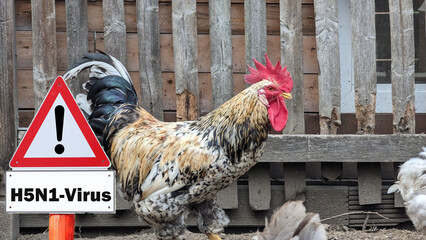The health “experts” are “on alert” after the first case of bird flu has been found in a child. The Centers for Disease Control and Prevention (CDC) confirmed a case of avian influenza (H5N1) in a boy in California on November 22nd.
This is the first time a bird flu infection was found in a child in the United States. So far in 2024, more than 50 human cases of H5N1 have been reported among farm workers, with 29 of those cases being reported in California. All cases involved mild symptoms such as pink eye, according to a report Very Well Health. A teenager in Canada had also recently been confirmed to have bird flu as well.
The Canadian case is also interesting, as it was reported that the strain that infected the teenager was a different one than is found in dairy cattle.
Canada’s Bird Flu Case Is A Different Strain Than Is Found In Dairy Cattle
Close contacts of both the California child and the Canadian teenager have tested negative for the virus. “To date, there has been no person-to-person spread identified associated with any of the H5N1 bird flu cases reported in the United States,” the CDC stated. So how did these young people contract the HPAI (high pathogenic avian influenza)?
“These changes alone do not mean that the virus is poised for efficient human-to-human spread, as many additional changes are likely needed for that to occur,” according to Katelyn Jetelina, MPH, PhD, an epidemiologist and data scientist told Verywell.
A CDC spokesperson told Verywell that as long as bird flu persists in wild birds, poultry, and dairy cows, sporadic infections in people with direct or recreational exposure are possible.
The CDC urges companies, farmers, and individuals to prioritize infection control to mitigate risks. This means avoiding exposure to sick or dead animals, animal feces, unpasteurized or raw milk, or materials that have been touched by potentially infected birds or animals. People who work in close proximity to farm animals should wear appropriate and personal protective equipment, such as masks, gloves, and plastic gowns over clothing. –Very Well Health
“Following these recommendations is central to reducing a person’s risk and containing the overall public health risk,” the CDC says.
Read the full article here
